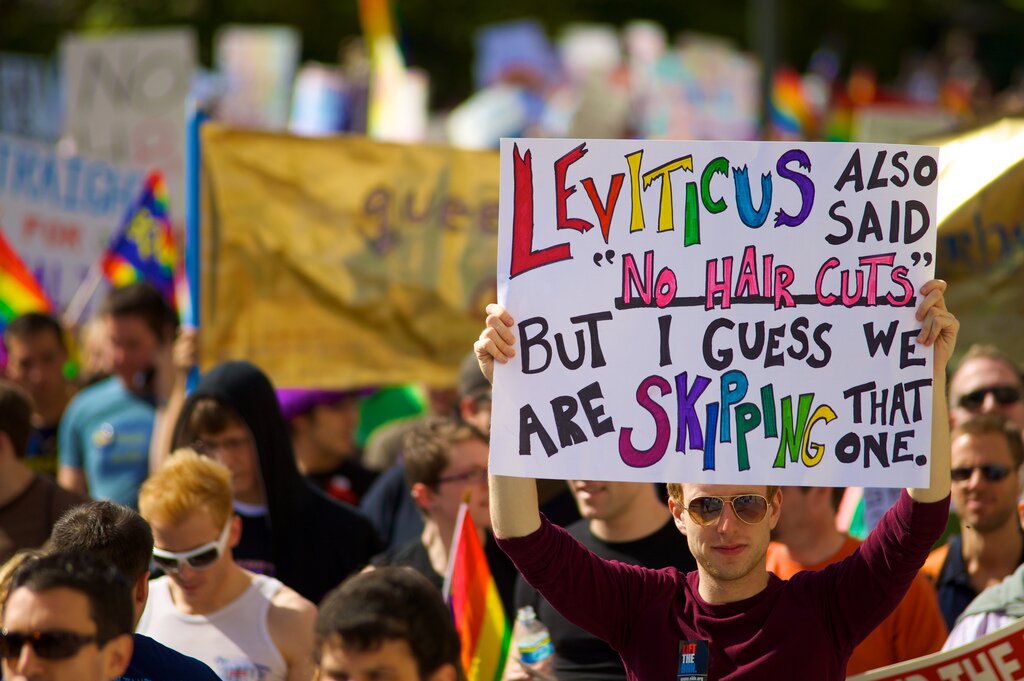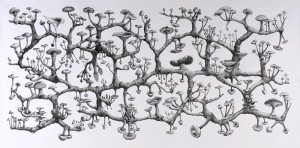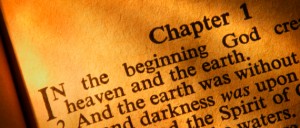My Russian grandmother has always encouraged my mom and me to become more devout Orthodox Christians. Growing up in the Soviet Union, my grandmother often had her faith tested, as religion was seen as a competing institution to the communist regime. It was the late 20th century, when the Soviet government fought to gain total autonomy, advocating atheism in schools (producing people like my atheistic father) and harassing churches as well as other religious institutions— even going as far as to ridicule religion with propaganda. Having kept her faith stable throughout her life and into the new millennium, my Grandma’s trust in religion became a source of great dependence and power. This dependence always struck me as so interesting; what was it about her faith that was powerful enough to outlast the Soviet Union? My grandmother used to say something about the structure religion provided in her life: it gave her the foundation upon which she built what she saw as a righteous lifestyle.
I remember, on multiple occasions, my mom quickly shooting down any attempts of my grandmother to convert me to Orthodox Christianity. I remember my mom was not trying to discount its validity, but instead she saw herself as letting me choose what I wanted to believe in. But my grandma could never understand my mother’s apprehension when approaching religion, an apprehension that I now carry.
My mother’s and my caution toward religion was not a result of pure coincidence; it was conditioning and style of thinking. I was raised to ask questions and be critical of assumptions. My grandma, on the other hand, could not afford to look at all the options offered growing up- she had to latch on to a belief and stick to it, or she might have ended up faithless and hopeless as the rest of the people in Soviet Russia did (or so she claims). My biggest issue with accepting a faith was, and still is, that any particular religious doctrine, Christianity in this case, came with so many different branches and so many different principles within each branch. My grandmother depended on the authoritarian nature of her religion to lead her in a time where the legal authority was not satisfying. This authority, mostly encompassed in the leading religious book, the Bible, never struck me as something that would provide direction in my life. Books like the Bible have been accepted as structurally sound. This is intuitive: if societies are going to develop according to a book, it needs to have some ability to hold a consistent fundamental framework. Yet, to this day, I still see the Bible as so vague that it could hardly produce any more structure in my life than I would have without it. The number of directions I could take my life while still remaining within the constraints of one book makes it seem like it would be easier for me to find my own way through life with no directional assistance provided. In fact, when I recall all the attempts to use the Bible and get a more clear sense of what direction I should be taking my life in, I end up unsure of how to read the Bible, and the concern I had over what I should be doing with myself transformed into a chasm of uncertainty revolving around the interpretation of the book I try to design my life around.
We knew, of course, about the power of the Bible to unite groups of people of across various races, socioeconomic background, and cultures. But our general sense of the universal power of the Bible comes with the assumption that everyone who reads the Bible has the same standards by which they live a righteous life. The debate over the acceptance of homosexuality was, and still is, a long-lasting fight that had the powerful effect of making it clear that the Bible was susceptible to providing support and evidence for opposing sides of even the most polar of issues. The authoritative power belonged not with the text, but to this who read it and chose to live by it.
Our initial false understanding of the Bible as authoritarian was neither a hunch we lived off of, nor a commonly questioned assumption we accepted. This view of the Bible was the result of years of preachers leading sermons trying to reconcile people with each other by not providing them the chance to argue over interpretation of the verses within a church. In the mind of the conservative church preachers, that attempt at unification has been epitomized in the attempt to demoralize homosexuality. These conservatives take the Bible and use its words to convince others that homosexuality is prohibited. By taking pieces of the Bible and ranking them by how much they reflect the view being argued, they prioritize the teaching of verses that are easier to interpret as anti homosexual. One such verse is Leviticus 18:22. The verse, in the King James version of the Bible, goes like, “Thou shalt not lie with mankind, as with womankind: it is abomination.” While different Bible translations can come up with slightly differing versions, the translation does not effect the interpretation in a way that would be crucially detrimental to the interpretation presented by conservatives. This in itself is a point that conservatives like to emphasize when asserting the power of the verse condemning homosexuality. This verse is taken very literally when used as an argument against homosexuality. “Man shall not lie with man” means to say that a man and a man may not be together. “Lie” is a key word here, as this verse is directly expressing the wrongness of two men being in bed together. This is clarified by “with woman kind”, where it is understood that man is to lie with woman in a certain way (a way that would result in procreation, the justification for any laying at all), but to lie with man in the same way would be an “abomination.” For this conservative biblical view said “abomination” would be something that is exceedingly sinful and wicked.
The idea is further elaborated upon in Leviticus 20:13, where it is written “If a man also lie with mankind, as he leith with a woman, both of them have committed an abomination: they shall surely be put to death; their blood shall be upon them.” Here we not only see the mentioning of homosexual affairs, but the degree to which such affairs can be punished and which parties are to be punished. Again we see the use of the word “abomination”, which is in turn suggested to be punished by being “put to death.” To heighten the anti-homosexual argument of this verse, there is emphasis put on the last clause, “their blood shall be upon them.” This implies that the people committing the act brought their punishment upon themselves, that they are both at fault. This can be taken even as far as to be asserting that homosexuality is a choice and thus it is a crime where only those who partook in the homosexual behaviors are to be punished: they were both consenting and therefore should take their punishments upon themselves. This conservative approach to the topic of homosexuality in the bible may vary on which aspects of Leviticus 18:22 and 20:13 they focus on, but these two verses are two verses that naturally, and seemingly unavoidably, undermine homosexual affairs as virtues (or at least neutral). For this more homosexual rejecting interpretation, as for so much of generally accepted interpretations, preachers have conducted careful literary analysis to tease their target points out of the text.
Anti- homosexuality advocates are not the only literary critics of the Bible. On June 26, 2015, same sex marriage was finally legalized by the Supreme Court Case decision of Obergefell v. Hodges (Diamond). This decision, while a victory in many hearts, faced the Christians of the United States with a discomfiting reality: The Bible that had for so long been used as a reason for why homosexuals could not get married (because homosexuality is an abomination) was in a position where it was being undermined by a policy. The sudden nationwide strike back against a holy text shocked the masses. At the battle for the equal recognition of homosexual marriage, right from the beginning, many non-Christians that tried discrediting the Bible were actively voicing their opinions on the validity of the Bible. Often, they would point out clauses that contradict each other, and interpret verses to intensify the contradictions. Murder, for example, is one such famous contradiction. Exodus 20:13 captures one of the Ten Commandments given to Moses by God, “Thou shalt not kill”. Exodus 32:27 then later states “Thus saith the LORD God of Israel, Put every man his sword by his side, and go in and out from gate to gate throughout the camp, and slay every man his brother, and every man his companion, and every man his neighbor”, which, as most non-Christian people claim, is an obvious contradiction as it commands people to “slay” others. Leviticus 20:13, mentioned earlier, is yet another clause that is pointed to when identifying contradictions in the Bible. It too opposes the commandment of “Thou shalt not kill” when it encourages homosexuals to be “put to death.” In such an analysis of the Bible, contradictions and plot holes in the picture the Bible paints are things that non-Christians try to emphasize, like discounting the bible. Validity is lost if one verse is interpretable in several ways; much more so from multiple verses regarding the same topic, and especially across multiple topics.
Pro-homosexuality Christians grasped this literary challenge, to bring back validity to the Bible, and even before the legalization of gay marriage, began forming claims surrounding the misinterpretation— that is to say, they argued that there was gross misuse—of the Bible. Homosexual Christians renounced the notion that the Bible advocated homophobic values, claiming that it is “…utter nonsense. I read the Old Testament. I read Leviticus and Genesis. I find it quite incredible really that people can extract those texts and use them as excuses for saying that therefore God hates homosexuals. I think it is intellectually very unsound.” (Yip 117) Homosexual Christians who battled with their sexual orientation and turned to the Bible to find answers, soon realized that it was not the Bible that condemned homosexuality, but the individuals and church groups that interpreted it. “In their relationships with the Church, gay Christians are subjected to the Church’s vocabulary of motives that labels their lifestyle as unacceptable. In response, gay Christians have to develop an alternative vocabulary of moral motives that label their sexuality and lifestyle as compatible with Christianity.” (Yip 116)

In such claims, removing the Bible as the source of Homophobia lay the roots of the nature of the Bible being widely interpretable—the understanding that verses can be reinterpreted and that emphasis of underrepresented verses can change the virtues advocated. Book writer and Bible critic Mark Powell for example, pushes back against the idea that the Bible is homophobic by starting at one of the commonly identified reason behind why the Bible would prohibit homosexual relations, procreation. He draws attention to the verses Ruth 1:1-5, regarding the fact that some couples will naturally be unable to bear children, Matt 19:12, pertaining to the fact that it is acceptable to remain alone and celibate, and Genesis 2:18, which claims that people should not spend life alone. Powell’s understanding of the Bible as not condemning homosexual behavior is not simply an extrapolation of the verses, but analysis focusing on the relationships between the verses. His analysis of the Bible, a view that is not uniquely his but shared with many other “students of the bible”, results in a view that, while homosexuality might be seen as “non-normative”, it is an exception to the rule that relationships must be rooted in the goal to procreate, just as celibacy and childless relationships are. (Powell) Homosexual relationships still manage to abide by claim in Genesis 2:18 that “…It is not good that the man should be alone…”, more so than remaining celibate, a practice allowed by the church, does. All this analysis is from yet another “literary critic” whose specialty is the Bible.
Such interpretations of the Bible provide a firm foothold to the difficulty I find in trusting the Bible with the way I am to live my life— that one conservative priest could turn to Levictus and claim homosexuals are to be punished by death; while a homosexual Christian can look at the same Bible and claim it encourages homosexuality over being alone. The common assumption that the Bible is an authoritarian presence in society and works to provide structure to people’s lives haunts all that accept it as a guidebook even when it gives virtually no clear instruction. True, some have asserted this authoritative nature arises from fundamentalism, as Bible critic Dennis E. Owen points out, “Such characterizations are not entirely without some basis in fact. Fundamentalism will almost always appear authoritarian, and so too will forms of Pentecostalism which, like Fundamentalism, place a heavy emphasis on correct thinking and combine a belief in the infallibility of scripture with a commitment to literal readings.” (Owen 73) Yet, although it seems there is an aspect of fundamentalism and emphasis of the “infallibility” of scripture, it is immediately disproved by the fact that there are multiple widely believed interpretations of the same book, allowing the reader to decide what “correct thinking” is.
For understanding the Bible, there is— only an image of authority. In reality it has no power. Religion is based off the stability of the Bible, a stability that is undermined by the very people who read the Bible. Confronted with the realization that the writing of the Bible is incapable of bossing us around, the readers, the priests, preachers, any Bible reader, is permitted to superimpose their own interpretations. As their job becomes to interpret the bible for the masses—they have become literary critics themselves. We pick what it means, often according to what we already do, and then just use our interpretation of the Bible as justification for what we have decided to do. The Bible is only spuriously static.
This is not the case with only Christianity and the Bible, but the case with any religion, philosophy, and principle, based off a written text. It is no novel occurrence that a book as seemingly authoritarian as the Bible is quite the opposite. The church claims its understanding of the Bible to be the one of most plausibility. But we have evidence for the plausibility of our understanding too, ones that are just as supported by the verses. It is the nature of written text. Anyone can pick up a book at any time and say what they want about the text, making a literary critic of themselves, dismissing context and purpose. The interpretability of text confers on us, the critics, the most unsettled of challenges—the burden of molding the text of the Bible, the burden of deciding what God’s word is to be. If we were to really abide by “God’s” word, the only way to do this with minimal influence from the critic would be to hear it from God himself.
Works Cited:
Diamond, Jeremy, and Ariane de Vogue. “Supreme Court rules in favor of same-sex marriage nationwide” CNN Politics. CNN. June 27, 2015. Online.
Yip, Andrew K. T. “Attacking the Attacker: Gay Christians Talk Back.” The British Journal of Sociology, vol. 48, no. 1, 1997, pp. 113–127
Powell, Mark Allen. Faithful Conversation: Christian Perspectives on Homosexuality. Fortress Press, 2003.
Owen, Dennis E. et al. “Authoritarian or Authority-Minded? The Cognitive Commitments of Fundamentalists and the Christian Right.” Religion and American Culture: A Journal of Interpretation, vol. 1, no. 1, 1991, pp. 73–100
Writing in the style of Ta-Nehisi Coates (http://www.theatlantic.com/magazine/archive/2012/02/why-do-so-few-blacks-study-the-civil-war/308831/)



 If you are one of the three in ten Americans who believes that the Bible must be taken literally (Gallup), I should warn you that this essay will call your conviction into question—but not for the typical reasons. Countless researchers have disproven “strict creationism”—the notion that God created the earth and all its creatures in their present forms in six days—through such techniques as radioactive dating and evolutionary analysis, but often creationists simply reply that those techniques must be flawed; after all, the creation of the universe is laid out clearly and explicitly in the Bible. I will argue on those terms: not that creationism is scientifically invalid, but that it is biblically invalid.
If you are one of the three in ten Americans who believes that the Bible must be taken literally (Gallup), I should warn you that this essay will call your conviction into question—but not for the typical reasons. Countless researchers have disproven “strict creationism”—the notion that God created the earth and all its creatures in their present forms in six days—through such techniques as radioactive dating and evolutionary analysis, but often creationists simply reply that those techniques must be flawed; after all, the creation of the universe is laid out clearly and explicitly in the Bible. I will argue on those terms: not that creationism is scientifically invalid, but that it is biblically invalid. It is popularly known that according to Genesis, God created the world “in the beginning” (בְּרֵאשִׁית, b’reishit), but this is not in fact what the first word of the Bible means. “The,” first of all, is nowhere to be found in the text: בְּ (b’) means “in,” but the definite article (הַ) is lacking—b’reishit instead of b’hareishit—and though biblical poetry occasionally omits definite articles, expecting the reader to fill them in, biblical prose never does. This prompts a translation of “In a beginning,” which in turn raises all manner of questions: Are there multiple beginnings to this world? Are there multiple worlds? If so, did our God create those too? But this translation is not quite correct either, for if it were, the text would have read bareishit, changing the vowel underneath the בּ from בְּ to בָּ. With this particular vowel, b’reishit means “in the beginning of,” requiring a noun after it—there are four other places in the Torah where it does so and none where it does not (Genesis, 1.1; Reb Jeff)—but the next word in the sentence, problematically, is not a noun but a verb: בָּרָא (bara), meaning “created.” A literal translation, then, of the first two Hebrew words in Genesis would read, “In a beginning of God created”—in other words, an “ungrammatical mess” (Reb Jeff). Most modern “literal” translations approximate the Hebrew as “In the beginning of God’s creation” or “In the beginning of God creating”; this still proves inadequate since בָּרָא is neither a noun nor a gerund (Goodheart and Osborne), but if a translator seizes this approach, interestingly enough, Genesis 1-3 could be one large sentence, as punctuation was only added by the early Christians. One such translation: “When God began to create the heavens and the earth, the earth being formless and void, darkness upon the face of the deep, and the breath of God hovering upon the face of the waters, God said, ‘Let there be light’: and there was light” (Giere, 18).
It is popularly known that according to Genesis, God created the world “in the beginning” (בְּרֵאשִׁית, b’reishit), but this is not in fact what the first word of the Bible means. “The,” first of all, is nowhere to be found in the text: בְּ (b’) means “in,” but the definite article (הַ) is lacking—b’reishit instead of b’hareishit—and though biblical poetry occasionally omits definite articles, expecting the reader to fill them in, biblical prose never does. This prompts a translation of “In a beginning,” which in turn raises all manner of questions: Are there multiple beginnings to this world? Are there multiple worlds? If so, did our God create those too? But this translation is not quite correct either, for if it were, the text would have read bareishit, changing the vowel underneath the בּ from בְּ to בָּ. With this particular vowel, b’reishit means “in the beginning of,” requiring a noun after it—there are four other places in the Torah where it does so and none where it does not (Genesis, 1.1; Reb Jeff)—but the next word in the sentence, problematically, is not a noun but a verb: בָּרָא (bara), meaning “created.” A literal translation, then, of the first two Hebrew words in Genesis would read, “In a beginning of God created”—in other words, an “ungrammatical mess” (Reb Jeff). Most modern “literal” translations approximate the Hebrew as “In the beginning of God’s creation” or “In the beginning of God creating”; this still proves inadequate since בָּרָא is neither a noun nor a gerund (Goodheart and Osborne), but if a translator seizes this approach, interestingly enough, Genesis 1-3 could be one large sentence, as punctuation was only added by the early Christians. One such translation: “When God began to create the heavens and the earth, the earth being formless and void, darkness upon the face of the deep, and the breath of God hovering upon the face of the waters, God said, ‘Let there be light’: and there was light” (Giere, 18). In the face of such opacity as the first few words of Genesis, what are readers to conclude? We may call that vowel a mistake, but those who believe that God dictated those words and that “Nothing is here by chance” will no doubt resist that interpretation (van Kooten, 5); or, alternately, we can reach for a super-grammatical meaning, such as, “The world was created, but it never stopped being created. The world has a beginning, but it is a beginning that has never ceased” (Reb Jeff). This, of course, is not the literal interpretation three out of ten Americans demand, but those readers fail to realize that “the ambiguity is inherent in the text itself”: no literal exegesis is possible (Giere, 20).
In the face of such opacity as the first few words of Genesis, what are readers to conclude? We may call that vowel a mistake, but those who believe that God dictated those words and that “Nothing is here by chance” will no doubt resist that interpretation (van Kooten, 5); or, alternately, we can reach for a super-grammatical meaning, such as, “The world was created, but it never stopped being created. The world has a beginning, but it is a beginning that has never ceased” (Reb Jeff). This, of course, is not the literal interpretation three out of ten Americans demand, but those readers fail to realize that “the ambiguity is inherent in the text itself”: no literal exegesis is possible (Giere, 20). Many scholars have attempted to reconcile these two competing narratives. Rashi insists that “The listener may think that this is another story, but it is only a detailed account of the former,” which doesn’t at all explain the contradictory orders and number of days (Genesis, 2.8). As for the discrepancy in sequencing, he teaches that “everything was created on the first” day but was “brought forth” on different days: for example, plants were created on the third day as the first version requires, but “they stood at the entrance of the ground until the sixth day,” after man was created (Genesis, 1.24, 2.5). Though this explanation takes the liberty to add midrashically to the text, it is at least plausible, but it nonetheless fails to account for the second version’s claim that creation was only one day long. As for how male and female were created, Rashi suggests, “He originally created [man] with two faces, and afterwards, He divided him” (Genesis, 1.27); other scholars expound: “In the first story of creation (Gen 1:27) an androgyne is made by Elohim. In the second account of creation, YHWH Elohim separates man and woman by creating Eve (Gen 2:18). Now the androgyne is split up into two distinctive creatures, a male and a female” (Luttikhuizen, 4). Dividing a hermaphrodite in half, however, is quite different from creating man and then extracting a single rib to form woman; thus, this interpretation neglects the clarity and specificity of the second account. In the creation story, “inconsistencies and contradictions…come down to us as a single work” (Brichto, viii)—so when someone identifies as a creationist, it begs the question: which version?
Many scholars have attempted to reconcile these two competing narratives. Rashi insists that “The listener may think that this is another story, but it is only a detailed account of the former,” which doesn’t at all explain the contradictory orders and number of days (Genesis, 2.8). As for the discrepancy in sequencing, he teaches that “everything was created on the first” day but was “brought forth” on different days: for example, plants were created on the third day as the first version requires, but “they stood at the entrance of the ground until the sixth day,” after man was created (Genesis, 1.24, 2.5). Though this explanation takes the liberty to add midrashically to the text, it is at least plausible, but it nonetheless fails to account for the second version’s claim that creation was only one day long. As for how male and female were created, Rashi suggests, “He originally created [man] with two faces, and afterwards, He divided him” (Genesis, 1.27); other scholars expound: “In the first story of creation (Gen 1:27) an androgyne is made by Elohim. In the second account of creation, YHWH Elohim separates man and woman by creating Eve (Gen 2:18). Now the androgyne is split up into two distinctive creatures, a male and a female” (Luttikhuizen, 4). Dividing a hermaphrodite in half, however, is quite different from creating man and then extracting a single rib to form woman; thus, this interpretation neglects the clarity and specificity of the second account. In the creation story, “inconsistencies and contradictions…come down to us as a single work” (Brichto, viii)—so when someone identifies as a creationist, it begs the question: which version? We have established the incoherency of the beginning of the creation story, and we have established that the main narrative contains serious enough discrepancies to undermine its integrity. None of these phenomena are introduced merely in translation; these contradictions, ambiguities, and grammatical peculiarities are rooted in the original text. The typical argument of “strict creationists” is a simple syllogism: “the Bible cannot be wrong”; “the Bible says the world was created in six days”; thus, “the world was created in six days” (Fitch, 3). The typical counterargument is to contest the former premise with science, but, as this argument has failed to convince 30% of Americans, this essay has taken a different approach by refuting the latter premise: that it is altogether uncertain how the biblical world was created, for the Bible first makes clear that it will not tell us when the beginning was—or perhaps implies that the beginning lasts forever—and then offers two contradictory answers for how long creation took. This is not a scientific argument, but a theological and literary one. If the biblical creation narrative is neither unified nor intelligible, how can it be read literally?
We have established the incoherency of the beginning of the creation story, and we have established that the main narrative contains serious enough discrepancies to undermine its integrity. None of these phenomena are introduced merely in translation; these contradictions, ambiguities, and grammatical peculiarities are rooted in the original text. The typical argument of “strict creationists” is a simple syllogism: “the Bible cannot be wrong”; “the Bible says the world was created in six days”; thus, “the world was created in six days” (Fitch, 3). The typical counterargument is to contest the former premise with science, but, as this argument has failed to convince 30% of Americans, this essay has taken a different approach by refuting the latter premise: that it is altogether uncertain how the biblical world was created, for the Bible first makes clear that it will not tell us when the beginning was—or perhaps implies that the beginning lasts forever—and then offers two contradictory answers for how long creation took. This is not a scientific argument, but a theological and literary one. If the biblical creation narrative is neither unified nor intelligible, how can it be read literally?